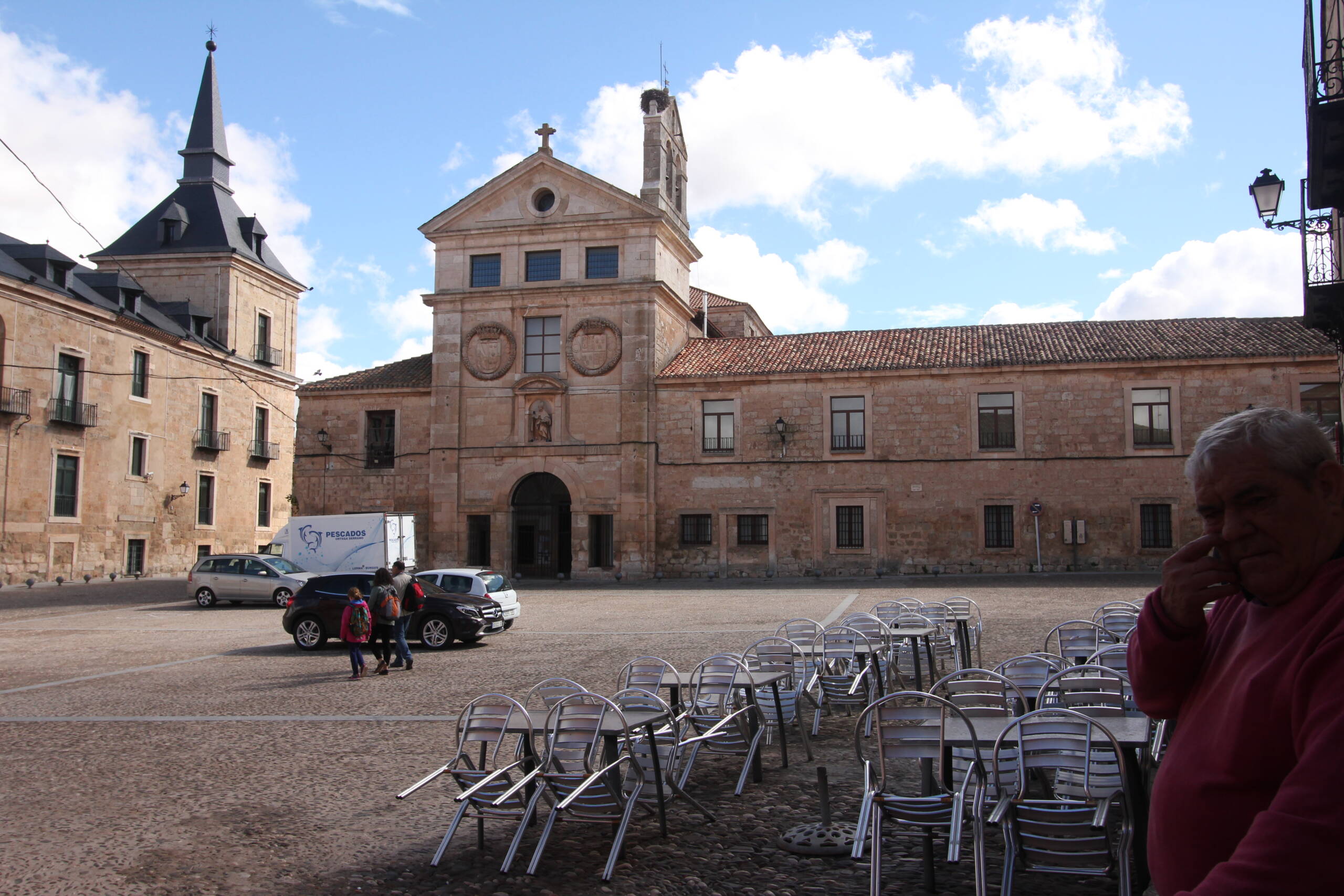Standing before the Monastery of San Zoilo in Carrión de los Condes, you can feel the contradiction immediately. The stone façade is solid, austere, dignified, with its carved medallions, its bell tower, and the tall spire of the adjoining tower pointing defiantly at the sky. This place has seen centuries of pilgrims on the Camino de Santiago pass through, has sheltered monks, hosted royalty, and heard the constant murmur of life. And yet, today, the story the plaza tells is one of silence.

The square is wide and cobbled, a space designed to hold gatherings, processions, the buzz of neighbors crossing paths. But what remains is mostly emptiness. A handful of chairs from a café sit stacked in neat rows, metal against stone, waiting for a crowd that rarely comes. A delivery truck unloads fish, a family hurries past, an elderly man lingers at the edge of the scene — each figure magnified against the hollow backdrop. The space feels oversized now, too big for the life that’s left to inhabit it.
This is the reality of rural Spain. Villages and towns across Castile and León, Extremadura, Aragón, and beyond have been hollowing out for decades. Young people leave for the cities, schools and shops close, and plazas like this one become echoes of what they once were. It is not just an economic story; it is demographic collapse. The phrase la España vaciada — the emptied Spain — captures the tragedy well: whole swaths of the country are slowly falling quiet.
Carrión de los Condes is fortunate compared to many places, because it still has the Camino. Pilgrims breathe some rhythm into the town, filling hotels and cafés in bursts, reminding the locals that the world still passes by here. But the energy is episodic, seasonal, and fleeting. The day-to-day life of the plaza is a silence punctuated by brief arrivals and quick departures.
To walk here is to witness more than architecture or history; it is to stand in a landscape where human presence is thinning. The stones remain, the monastery remains, the cross still rises — but the square is mostly empty. Rural Spain is dying not in some abstract sense, but right here, in the hollow heart of its towns, where the plazas themselves have grown too large for the number of people left to fill them.
Leave a Reply